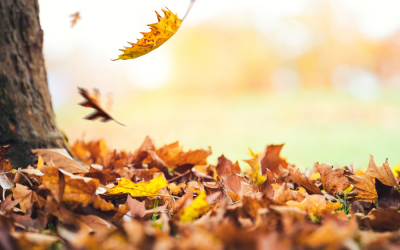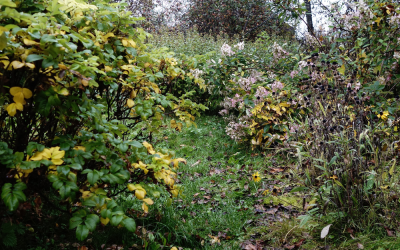If you have trees in your garden or business premises, you’ll know how important it is to keep them healthy, safe, and looking their best. That’s where tree surgery comes in. But with so many different techniques – like crown reduction, pollarding, and felling – it can be confusing to know what each one involves and when it’s needed.
As a professional tree surgeon based in Manchester, we carry out all kinds of tree work for local homeowners. In this blog, we’ll explain some of the most common tree surgery techniques – so you’ll know exactly what to expect and how each service can benefit your trees.
1. Crown Reduction
What is it?
Crown reduction is one of the most requested services we offer. It involves carefully trimming back the overall size of a tree’s crown (that’s the leafy top part) while keeping its natural shape.
Why do it?
- Reduces the tree’s height or spread if it’s getting too large for the space
- Helps improve light levels in your garden
- Lessens the risk of branches breaking off in storms
- Keeps the tree healthy by removing weak or crossing branches
How we do it:
We assess the tree’s structure and carefully prune back selected branches, usually by a certain percentage (e.g. 20% reduction). The aim is to keep the tree looking balanced and natural—not like it’s been hacked at.
2. Crown Thinning
What is it?
Crown thinning means removing some of the inner branches without reducing the size or shape of the tree.
Why do it?
- Allows more light to pass through the canopy
- Reduces wind resistance (which helps prevent damage in bad weather)
- Removes congested or rubbing branches
- Keeps the tree looking tidy and open
How we do it:
We remove smaller, less important branches throughout the crown – carefully and evenly. This is ideal for mature trees that are healthy but have become a bit dense or overgrown.
3. Crown Lifting
What is it?
Crown lifting involves removing the lower branches of a tree to raise the height of the canopy above ground level.
Why do it?
- Clears space for driveways, paths or lawns
- Improves views and lets in more light at ground level
- Helps prevent branches from hitting buildings, fences, or cars
How we do it:
We selectively prune or remove lower limbs, making sure not to damage the tree’s health or balance. It’s a great option for trees near houses or in smaller gardens.
4. Pollarding
What is it?
Pollarding is a more drastic form of pruning where all the upper branches are removed, encouraging dense new growth from the top.
Why do it?
- Keeps fast-growing trees at a manageable size
- Helps control shape in urban areas
- Can extend the life of older or damaged trees
How we do it:
We cut the tree back to the same points each time, starting when the tree is young. It’s a technique often used on species like willows, poplars, and planes. Not all trees are suitable for pollarding, so we’ll always advise first.
5. Tree Felling
What is it?
Tree felling is the complete removal of a tree.
Why do it?
- The tree is dead, dying, or dangerous
- It’s causing damage to buildings, driveways or drains
- You need to clear space for landscaping or building work
How we do it:
Depending on access and safety, we’ll either fell the tree in one go (if space allows) or take it down in sections using ropes and specialist equipment. We always carry out a full risk assessment before any felling job.
6. Stump Grinding & Removal
What is it?
After a tree is felled, the stump can be left behind. Stump grinding removes this using a powerful machine that grinds it below ground level.
Why do it?
- Removes a trip hazard
- Prevents regrowth
- Clears space for replanting or turf
- Stops stumps attracting pests like fungi or insects
How we do it:
We use professional stump grinders to safely and efficiently remove the stump, leaving your garden neat and tidy. We can also fill in the area with soil or wood chips if needed.
7. Deadwooding
What is it?
Deadwooding is the removal of dead, dying or diseased branches from a tree.
Why do it?
- Prevents branches from falling and causing injury or damage
- Improves tree health by stopping the spread of disease
- Keeps the tree looking tidy and well cared-for
How we do it:
We climb the tree (or use elevated platforms) to remove dead or brittle limbs. This is especially important in public areas or over gardens and driveways.
Choosing the Right Tree Surgery for Your Garden
Every tree is different – and so is every garden. Whether you’re looking to reduce the size of a tree, improve safety, or simply keep things looking neat, we’re happy to offer expert advice tailored to your needs.
We always carry out work to British Standards (BS3998) and with full insurance, ensuring the highest levels of safety and professionalism.
Need Help With a Tree in Your Manchester Garden?
If you’re not sure which service is right for your tree, don’t worry – that’s what we’re here for. We offer free quotes and friendly advice to homeowners across Greater Manchester, from Didsbury to Sale, Stockport to Prestwich.
Give us a call on 0161 300 9789 or send us a message today—we’re always happy to help!
Looking after your trees is an investment in your home’s safety, beauty and value. Let’s keep your garden growing strong.



